Aviation
“Explore Singapore Airlines’ First Class – with SIA Super Fan, BK Tan”
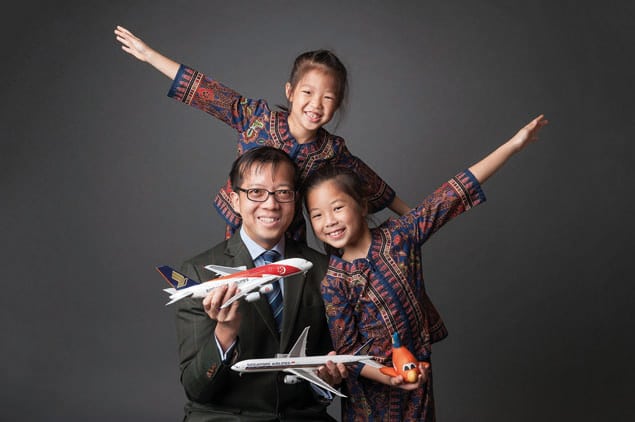
Traveling in Style, Onboard the World’s Best
If flying is your thing, you owe it to yourself to do it in style. Fly with the world’s best and get that all high and happy feeling, even before indulging in the delightful onboard service!
Singapore Airlines’ Super Fan , BK Tan (“BK”) recently flew First Class this April 9th, 2016 to Houston via Moscow from Singapore. Changi airport, home base of Singapore Airlines is the world’s best airport, well complimenting the carrier’s brand image
Flight Details:
Carrier: Singapore Airlines (SQ)
Flight Number: SQ62
Route: SIN-DME-IAH
Duration: 10 Hours 40 Minutes (SIN-DME); 11 Hours 25 Minutes (DME-IAH)
Aircraft: Boeing 777-300ER
Registration: 9V-SWT
Cabin Class: First Class
Seat Number: 02F (Dining) 01F (Resting)
Date: 09/04/16
Exclusive and personalized, the experience kicks-off with a private check-in at the airline’s First Class Lounge. Porters greet his and her “Royal Majesties” (“HRM”) upon arrival at curb-side drop-off, readily assisting with luggage whilst HRMs are personally escorted to available counters for check-in.
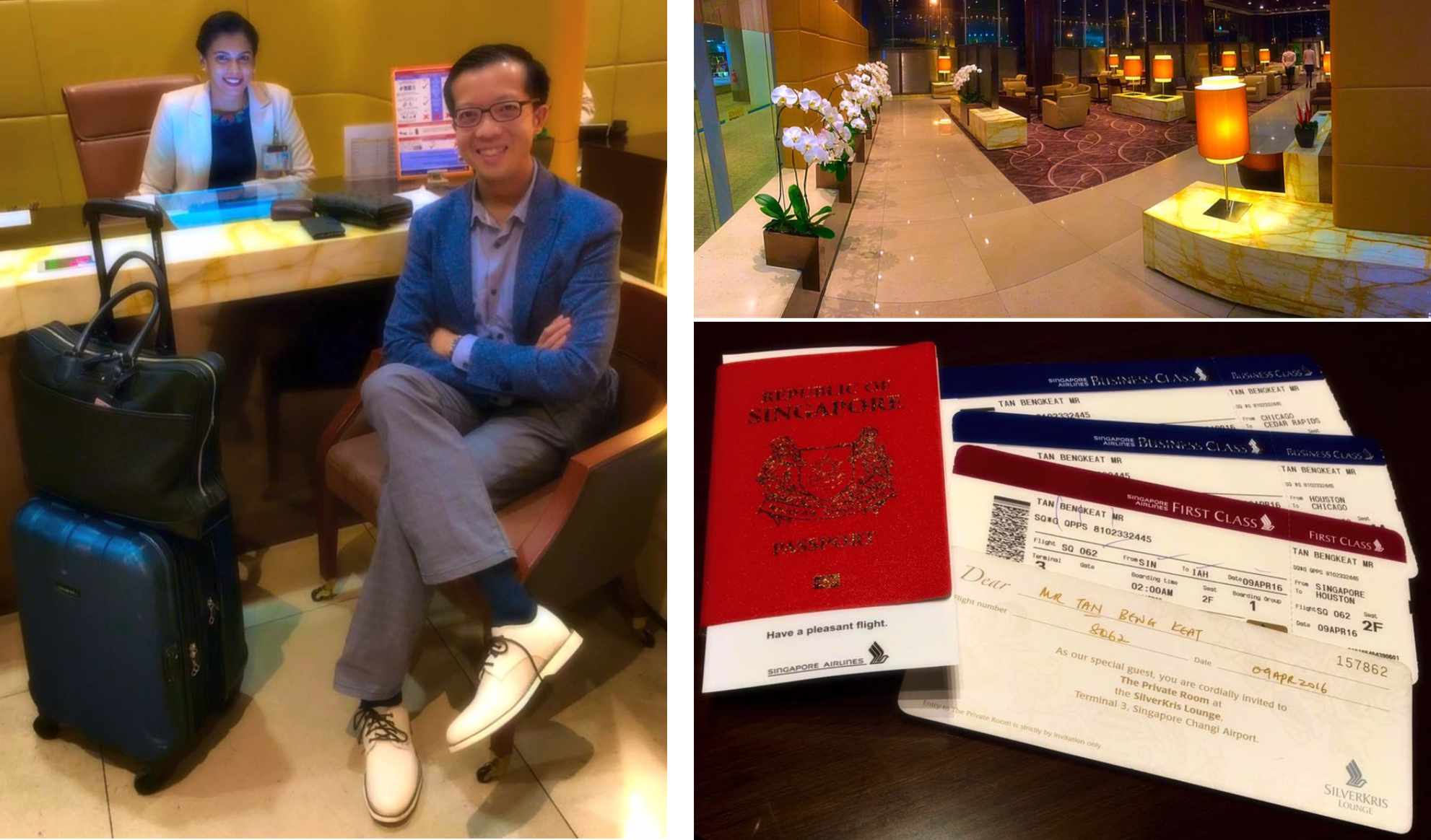
Once check-in formalities are completed, travelers on First Class and Suites clear immigration out-of-public-sight.

“Elites” flying out from Singapore onboard Singapore Airlines’ First Class and Suites, get invitations to The Private Room accessible by a quick escorted sprint past the “First Class” lounge.
Once inside The Private Room, to the left, past the sofas and televisions is a classy dining area, where a host of culinary delights await

Having had an abundance of time before the boarding call, I sampled the Poached Lobster Provençale and US Prime Beef Burger with Foie Gras, Rocket Leaf and Fried Quail Egg, washing it down with a glass of Piper-Heidsieck champagne. Well, how else do the Dukes and Duchesses of Beverly Hills do it?

After savoring two mains and some champagne, I decided to check out The Private Room’s shower facilities. A heavenly indulgence, considering I had nearly a day and a quarter of travel ahead of me. Besides, regardless of my class of travel, my personal standard is to be well-groomed on every flight.

Time check: 02:00am. Singapore Airlines’ Boeing 777-300ER (Tail: 9V-SWT / April 9th, 2016) was ready for boarding. Ecstatic about the 24 hour ride, I took wide brisk strides till the end of the “rainbow” where the aerobridge linked itself to “door two left”. “Good morning Mr. Tan”. I was escorted to my throne, 02F.
On Singapore Airlines, passengers traveling First Class (available only on selected Boeing 777 fleet) or Suites (available only on the Airbus A380 fleet) are offered a selection of either Krug or Dom Pérignon, versus that of Taittinger on Business Class.
Krug was my choice of pre-departure drinks, my taste buds remaining consistent from when I last flew First Class in November 2015 (Seoul-Incheon to Singapore / SQ15 aboard 9V-SWH), after having tasted Dom Pérignon in Suites previously in October 2014 (New Delhi to Singapore / SQ403 onboard 9V-SKJ). Personally, I find that Krug is smoother, less bubbly, more refined and exquisite in taste than Dom Pérignon. Well, am no Wine Sommelier but that’s my amateurish take on the difference between the two.
This First Class seat would be my “home away from home” where I’ll unwind and relax for the next 24 hours. With seven decades of “inflight service that even other airlines talk about”, a deep strong faith resides within me, confident that “finding something for everyone to love”; by “understanding your (my) needs, bringing you (me) a taste of the familiar”; and creating new levels of comfort” all comes naturally to my host, and the Singapore girl, for “it’s just one of the lengths we (Singapore Airlines) go (goes) to, to make you (me) feel at home”. (2013 Brand Campaign: http://youtu.be/jeiZ48BAr8A)
Momentarily lost in my own self, with a glass of Krug in hand, I was presented with a set of inflight amenities: Salvatore Ferragamo branded Male Kit; and Singapore Airlines house branded pajamas, eyeshades, sockets and cabin slippers. In the words of Smeagal from “Lord of the Rings”, these amenity kits were essentially “My Precious”.
Singapore Airlines’ branded amenities are offered to passengers traveling First Class and Suites for:




- a) Day flights between 0600hrs and 1800hrs, for flight durations in excess of 7 hours. Flights SQ12(SIN-NRT) and SQ634 (SIN-HND) are eligible
b) Evening flights between 1800hrs and 0600hrs, for flight durations in excess of 3.5 hours and which arrivals are after 0030hrs.
*On two sector flights with no break in journey, only one amenity kit will be distributed from point of embarkation.
“Ladies and Gentlemen, your Captain from the flight deck, wishing all a warm welcome aboard Singapore Airlines, SQ 62 to Moscow and Houston…..”



“Bringing you a taste of the familiar”
My Book The Cook (“BTC”) supper choice of Boston Lobster Thermidor would be served as breakfast; as I had decided to offer my breakfast selection of Nasi Lemak to the wonderful crew who had to forgo uninterrupted rest and attend to me on this red eye flight out of Singapore.
Available on selected sectors when flying in premium cabins of Singapore Airlines, passengers may choose their preferred culinary option, available up to 24 hours prior to departure, allowing the chefs time to whip up that storm for you. Healthier options, better referred to as “Wholesome Meals” were recently introduced by Singapore Airlines. No doubt, an awesome treat whilst flying over land and sea.
In any event, one can indulge in endless culinary pleasures when traveling in premium cabins. Pictured here are just some of the treats I savored during the 10 hours 40 minutes flight from Singapore to Moscow; and 11 hours 25 minutes flight from Moscow to Houston. Regretfully, no “Wholesome Meals” here. Bon appètit!


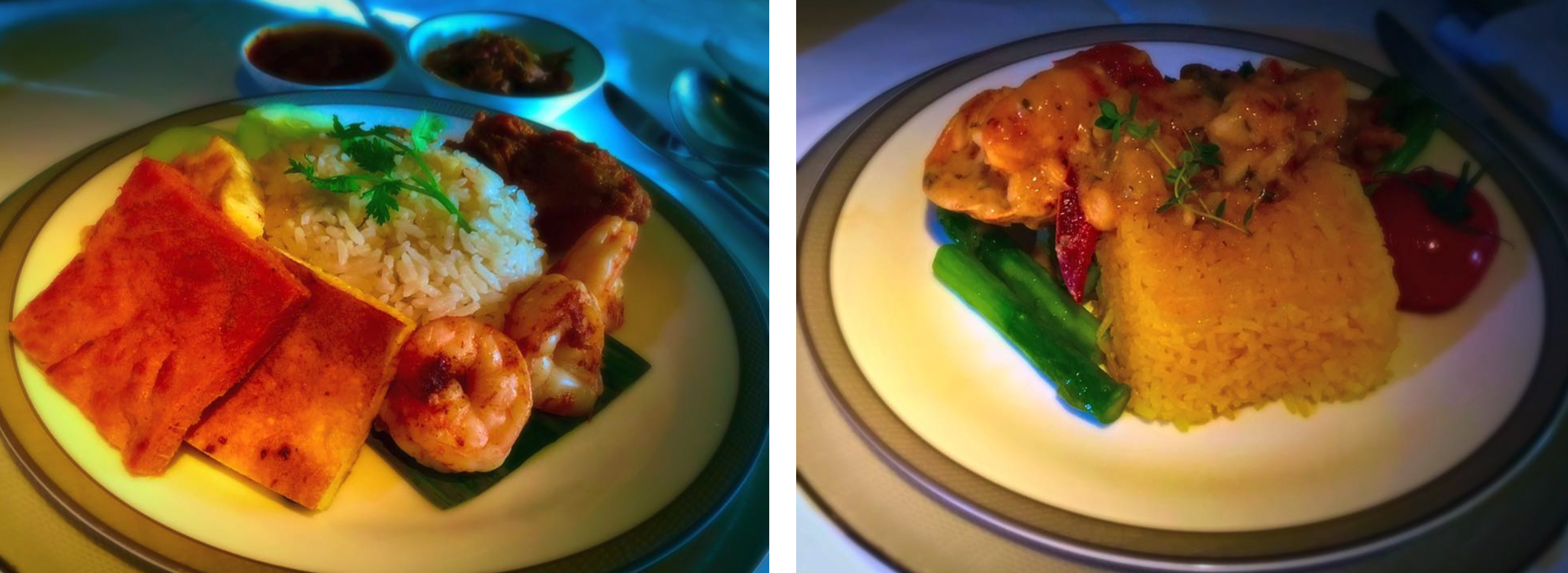

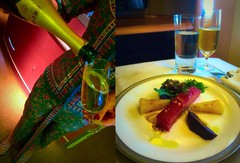



“Creating new levels of comfort”
Regardless of the class of travel, Singapore Airlines never fails to deliver, but it is a whole new world on the front end of the cabin. The word “pampered” takes on a whole new meaning, for what’s better than waking up to a glass of champagne in bed at 40,000 ft in the sky, whilst soaring through fluffy clouds in blue skies at 500mph?
Reality, momentarily tossed out of the windows could be a lifestyle change, but a fantasy and dream I could get accustomed to, twenty-four-seven. As chorused by Eurythmics in their 1983 Top Chart Hits of “Sweet Dreams”: “Sweet (“Suites”) dreams are made of this, who am I to disagree?”
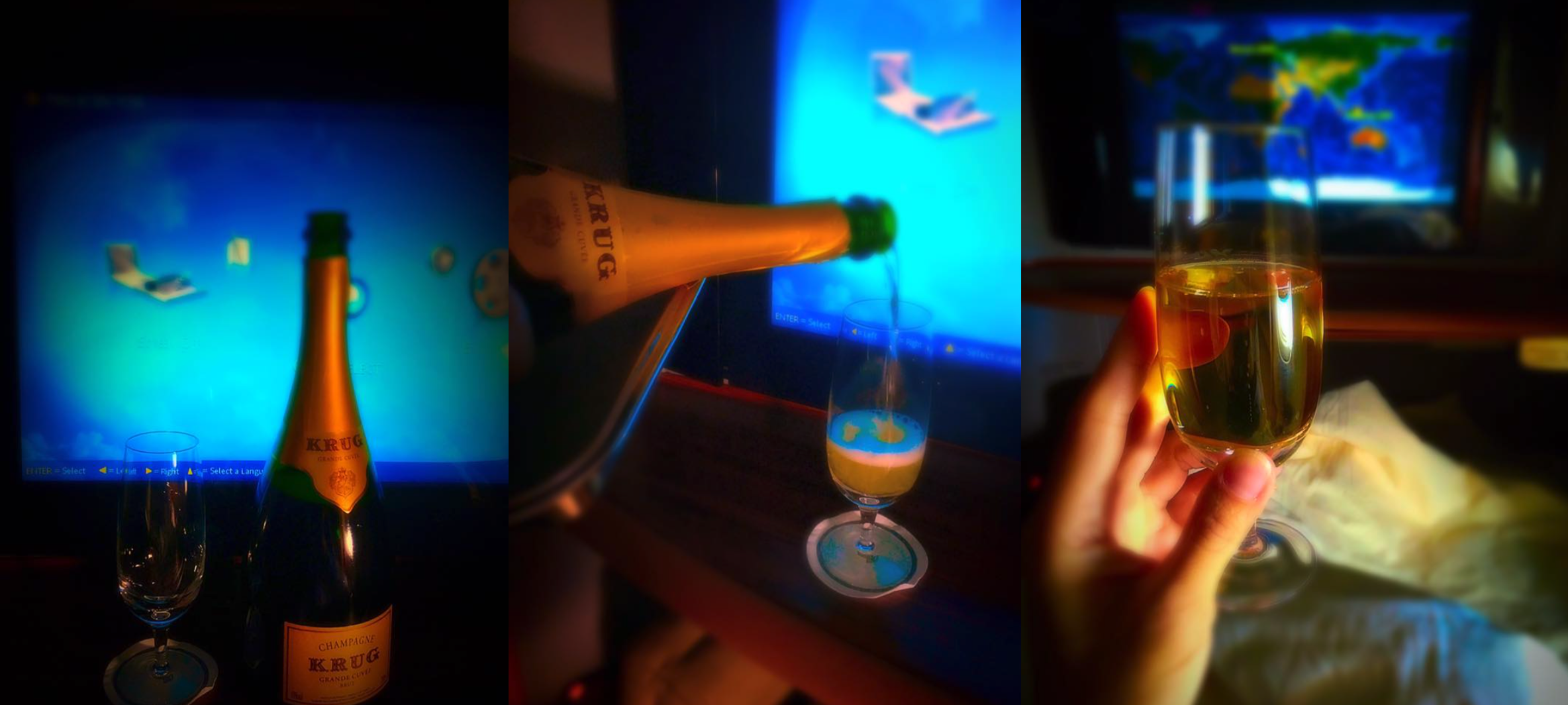
“Finding something for everyone to love”
Inflight entertainment on Krisworld gets better with Bose noise cancelling headsets for the “Duke” in-question. With hundreds of entertainment selections in a variety of genres and languages to choose from, Singapore Airlines has indeed kept to its commitment in finding “something for everyone to love”.

10:51am: 9V-SWT arrives in Moscow’s Domodedovo International Airport. After a short transit of an hour and 30 minutes, doors were closed and the warm fuzzy feeling was relived, yet again, on the 11 hour 25 minute flight to Houston’s George Bush Intercontinental Airport. The angels from heaven called out as we flew in bright warm sunlight for the entire journey to the USA!
13:44hrs: “Welcome to Houston, Ladies and Gentlemen. The local time is 1.44pm on Saturday the 9th of April and the temperature is 23 degrees C / 73 degrees F. Please note that Houston is 8 hours behind Moscow and 13 hours behind Singapore….. It has been our pleasure serving you on this flight. Thank you for flying with Singapore Airlines, a member of Star Alliance.”
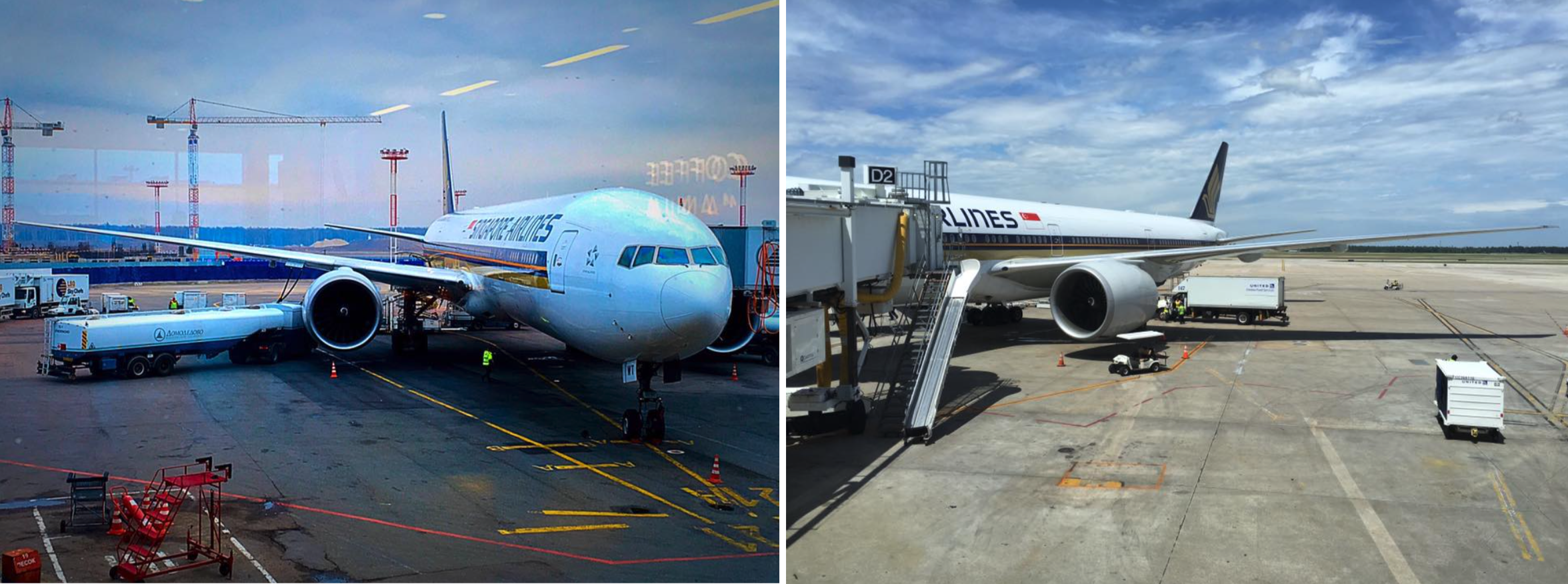
So, what really makes Singapore Airlines, now more than ever, a great way to fly? Thoughtfully scripted by TBWA in 2013, these words become a reality, on my flight to Houston, making the experience a branding success of unforgettable proportions.
“We search for what’s special;
For what lives an experience to another level;
And that unspoken feeling doesn’t happen by chance;
So no matter what changes, this commitment holds true;
We will find what truly matters, to make you feel at home.” – TBWA, 2013 Singapore Airlines Branding Content
If you have not enrolled in Singapore Airlines’ mileage rewards program, it may be interesting to note that a host of salutations are offered. With the exception of “Emperor”; “Empresses”; and “Dowager”, you’d find something suitable that rings a jingle to your ears. Here’s what I occasionally go by…. So next time you see me onboard, do drop by and chat with the “Lord”.☺
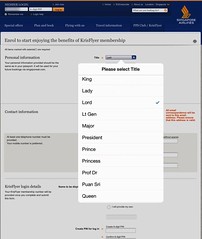
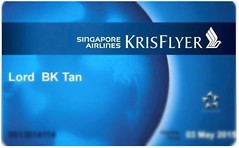
Contributed by:
Beng Keat TAN (“BK”) writing freelance. BK
may be contacted at bkeatan@gmail.com
Liked it ..?
Share with your friends and family

Aviation
Farnborough 2024: A Landmark Airshow Concludes with £81.5 Billion in Deals
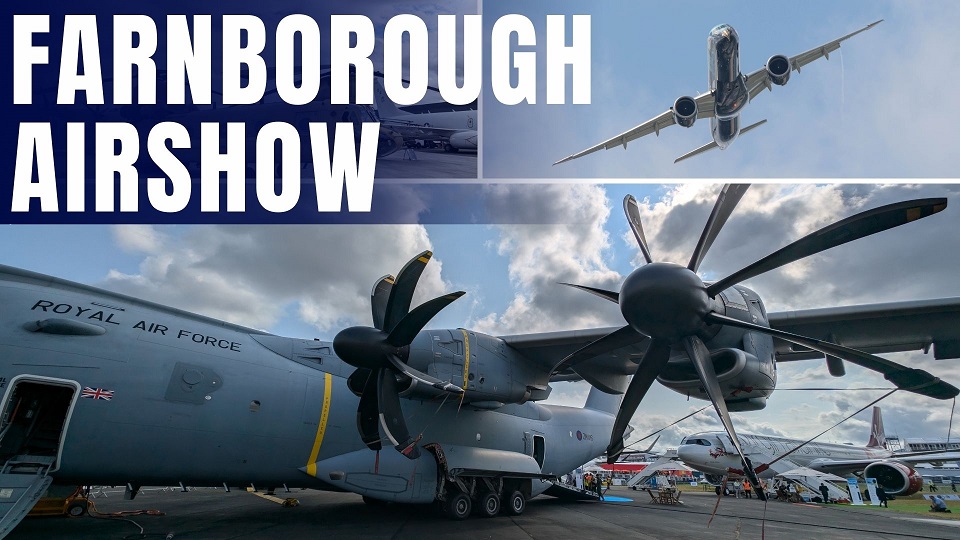
As the 45th edition of the Farnborough International Airshow (FIA2024) concluded, it proved to be a tremendous success. The event, which ended yesterday, saw £81.5 billion worth of deals signed and 260 firm commercial aircraft orders placed within the first four days. For the UK alone, the deals announced amounted to £13 billion.
The show ended with an exhilarating final air display. The Starlings Aerobatic Team performed an impressive formation flight, while the Stampe Formation team showcased their vibrant heritage aircraft. The Royal Air Force’s F-35 flyover and the F-15QA’s powerful farewell flight added to the excitement. The British Army’s renowned Red Devils parachuted down, providing a spectacular closing to the event.
Day 2 Highlights: Airbus, Boeing, and Embraer Orders at Farnborough International Airshow 2024 : Click here
With this year’s orders finalized, the focus on the fifth and final day of FIA2024 shifted to inspiring the next generation of pilots, engineers, manufacturers, and innovators. We eagerly anticipate seeing everyone again at the Farnborough International Airshow 2026.
Airbus Expands Reach with Major Orders
Airbus has secured two significant deals that will expand its presence in the global market. The Abra Group, aiming to enhance its international long-haul operations, signed a Memorandum of Understanding (MoU) for five A350-900 aircraft. Additionally, flynas, Saudi Arabia’s leading low-cost carrier, strengthened its partnership with Airbus by signing an MoU for 75 A320neo family aircraft and 15 A330-900s.
Embaer Aircraft
In the military aviation sector, Embraer announced a major order from the Paraguayan Air Force (FAP) for six A-29 Super Tucano aircraft. This versatile, multi-mission aircraft will enhance the FAP’s capabilities in armed reconnaissance, close air support, light attack, and advanced training missions.
Virgin Atlantic also made headlines by ordering seven additional A330neo aircraft. This order highlights the airline’s confidence in the A330neo’s performance and passenger comfort, as well as its commitment to sustainability. The advanced technology and fuel efficiency of the A330neo make it an ideal choice for Virgin Atlantic’s transatlantic operations, aligning with their goal of providing an enhanced and eco-friendly travel experience.
Boeing aircraft.
Boeing also had a notable presence on Day 2 of the airshow. Qatar Airways announced an order for 20 additional 777-9 airplanes, reinforcing its commitment to the 777X program. The 777-9, touted as the world’s largest and most fuel-efficient twin-engine jet, is set to play a crucial role in Qatar Airways‘ long-haul fleet expansion, offering increased passenger capacity and improved fuel efficiency.
In a significant move for the leasing sector, Macquarie AirFinance announced its first direct order with Boeing, purchasing 20 737-8 aircraft. This order not only doubles Macquarie AirFinance’s existing 737-8 order book, acquired from ALAFCO Aviation Lease and Finance Co. in 2023, but also underscores the continued strong demand for the 737 MAX family, known for its efficiency and versatility.
-

 Travel1 week ago
Travel1 week agoAir India to Expand US Operations with Three New Routes After a Decade
-

 Travel2 weeks ago
Travel2 weeks agoWhy We Should Avoid These Stamps in a Passport
-

 Airlines1 month ago
Airlines1 month agoInvestigations Reveal Fake Chinese Titanium in Boeing and Airbus Jets
-

 Tech4 weeks ago
Tech4 weeks agoChina’s CATL Plans 1,800-Mile Electric Plane Launch by 2027
-

 Airport3 days ago
Airport3 days agoTop 10 Largest Airports in the World by Size
-

 Aerospace4 weeks ago
Aerospace4 weeks agoChina’s Fighter Jets Turn Wings into Autonomous Drones
-

 Airlines4 days ago
Airlines4 days agoAir India Rolls Out A350s for Delhi-New York JFK and Newark Routes
-

 Defence3 weeks ago
Defence3 weeks agoBoeing Enhances Chinook with New Engines and Block II Upgrades at $96 Million







